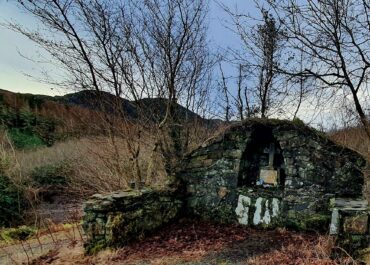Ritual site - holy well, Ballymunterhiggin, Co. Donegal
At the base of a collapsed cave in Ballymunterhiggin, County Donegal, lies what remains of Tober Patrick, a holy well that once drew pilgrims to this remote spot where bogland meets rocky hillside.
Ritual site - holy well, Ballymunterhiggin, Co. Donegal
Though now largely destroyed and obscured by overgrowth, archaeological investigations in 2003 revealed fascinating details about this ritual site and the infrastructure that supported religious visitors over the centuries.
The well itself sits at a curious junction of landscapes; low-lying bog stretches to the south and west, whilst a substantial rock outcrop rises to the north. The opening, measuring roughly 0.60 to 0.70 metres wide and a metre long, is naturally bounded by bedrock on its western edge. A dry stone wall topped with hawthorn once defined its northern boundary, forcing visitors to approach from this drier, more stable ground rather than risk the treacherous bog to the south.
Two stone stiles discovered during the archaeological survey hint at the well’s former importance in local religious practice. The better preserved of the two, built into a field boundary wall along the nearby country road, stands 1.10 metres high with three flat steps and a vertical divider, all constructed from irregular stones typical of the area. A second, more deteriorated stile was found closer to the rocky hill’s base. These structures likely served as crossing points for pilgrims making their way from the road to the sacred waters, physical remnants of a spiritual journey that continued here for generations before the site fell into disuse.


